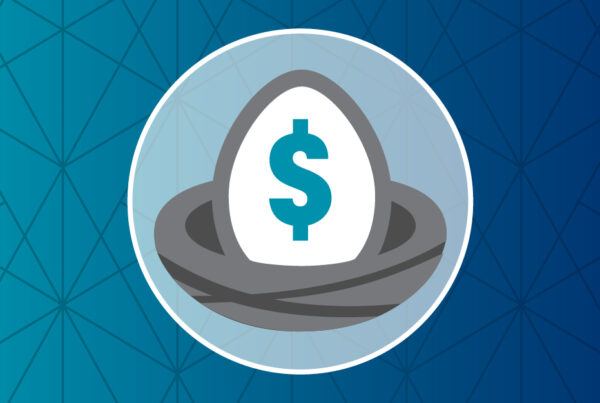New Tax & Super Changes for the New Financial Year
The new financial year brings a host of changes to taxes that affect all 13.6 million taxpayers.i
The biggest and most high-profile change is the cuts to tax rates from 1 July, which will deliver a benefit to every taxpayer, according to the Federal Government.ii
With the changes and extra income on the table it could be useful to review your current tax, super and investment strategies.
This will ensure you maximise the benefits from the tax cuts and make informed decisions when it comes to areas such as debt repayment, salary packaging and super contributions.
The new rates for each income tax bracket see the current 19 per cent tax rate reduce to 16 per cent, while the 32.5 per cent rate drops to 30 per cent. The income threshold at which the existing 37 per cent tax applies increases from the current $120,000 to $135,000.iii
In addition, the income threshold at which the 45 per cent tax rate applies increases from $180,000 to $190,000.
The government says the new rates provide taxpayers with greater protection against bracket creep (particularly low- to middle-income taxpayers) and result in lower average tax rates for all taxpayers.iv
More income but salary packaging impact
With additional disposable income now available, the start of the financial year is a good time, depending on your individual circumstances, to consider contributing more to your super account or paying down non-deductible debt such as your mortgage.
If you have a salary packaging arrangement currently in place, it’s worth noting the reduction in the lowest tax rate from 19 per cent to 16 per cent may affect the value of these types of strategies for some taxpayers.
For example, someone packaging $15,000 of debt repayments in 2023-24 saved around $5,000 with the 37 per cent tax rate, but under the new, lower 2024-25 tax rate of 30 per cent, this tax saving is significantly reduced.
Medicare Levy threshold uplift
Some taxpayers will also see changes due to the May 2024 Federal Budget increase to the low-income threshold for the Medicare Levy.
The lift in the existing income thresholds is designed to ensure low-income taxpayers continue to be exempt from the Medicare Levy or pay a reduced levy rate.
For the 2024-25 year, the income threshold exempts people earning $26,000 or less from paying the Medicare levy. After that, the levy increases gradually, with the full 2 per cent levy paid by anyone earning more than $32,500.v
Tax cuts impact businesses
Employers will also feel the impact of the new income tax rates and need to ensure they are withholding the right amount of pay as you go (PAYG) withholding tax from each employee’s pay, starting from 1 July 2024.
Employers should check their payroll software is using the correct, new withholding rates. An easy way to do this is to use the ATO’s online Tax Withheld Calculator.
Unincorporated businesses (such as sole traders) also benefit from the tax cuts as income received is taxed under the new, reduced individual income tax rates and thresholds.
SG rate changes for employees
From 1 July 2024, the Super Guarantee (SG) that employers are required to pay into their employees’ personal super accounts increased from 11 per cent to 11.5 per cent of ordinary times earnings. The SG will rise again on 1 July 2025 to reach its final level of 12 per cent.
The quarterly maximum super contributions base (MSCB) also rose to $65,070 (up from $62,270) from 1 July. Employers are not required to provide SG contributions for any salary amount paid to an employee above the quarterly MSCB limit.
Super contribution caps rise
From 1 July, there were increases in the annual caps governing the amount of contributions you can make into your super account before additional tax becomes payable on the contribution amount.
The concessional (before-tax) contributions cap increased to $30,000 (up from $27,500 in 2023-24), while the annual non-concessional (after-tax) contributions cap rose to $120,000 (up from $110,000 in 2023-24).viii
The increase in the non-concessional contributions cap means the limit for bring forward contributions now sits at $360,000 over three years (up from $330,000 over three years in 2023-24). The cap on your total super balance remains at $1.9 million, as does the general transfer balance cap.
For 2024-25, the CGT cap amount (or lifetime limit) for eligible business owners wanting to make tax advantaged contributions into their super account is $1,780,000 (up from $1,705,000 in 2023-24).ix
If you need help navigating the updated tax and super rules in place for the new financial year, call our office today!
Income tax rates for Australian tax residents
| Taxable income range ($) | Marginal tax rate (%) | Taxable income ($) | Marginal tax rate (%) | Tax payable |
| 1 July 2020 – 30 June 2024 | From 1 July 2024 | |||
| 0 – 18,200 | Tax free | 0 – 18,200 | Tax free | Nil |
| 18,201 – 45,000 | 19 | 18,201 – 45,000 | 16 | 16c for each $1 over $18,200 |
| 45,001 – 120,000 | 32.5 | 45,001 – 135,000 | 30 | $4,288 + 30c for each $1 over $45,000 |
| 120,001 – 180,000 | 37 | 135,001 – 190,000 | 37 | $31,288 + 37c for each $1 over $135,000 |
| Above 180,000 | 45 | Above 190,000 | 45 | $51,638 + 45c for each $1 over $190,000 |
These rates do not include the Medicare Levy, which remains at 2%.
i, ii, iv https://budget.gov.au/content/01-col-pressures.htm
iii https://taxcuts.gov.au/
v https://www.abc.net.au/news/2024-01-25/low-income-earners-extra-tax-relief/103387054
vi https://taxcuts.gov.au/dist/media/resources/Tax_Cuts_Factsheet_April_2024.pdf
vii https://www.ato.gov.au/tax-rates-and-codes/key-superannuation-rates-and-thresholds/super-guarantee
viii https://www.ato.gov.au/individuals-and-families/super-for-individuals-and-families/super/growing-and-keeping-track-of-your-super/caps-limits-and-tax-on-super-contributions/concessional-contributions-cap
ix https://www.ato.gov.au/tax-rates-and-codes/key-superannuation-rates-and-thresholds/contributions-caps




